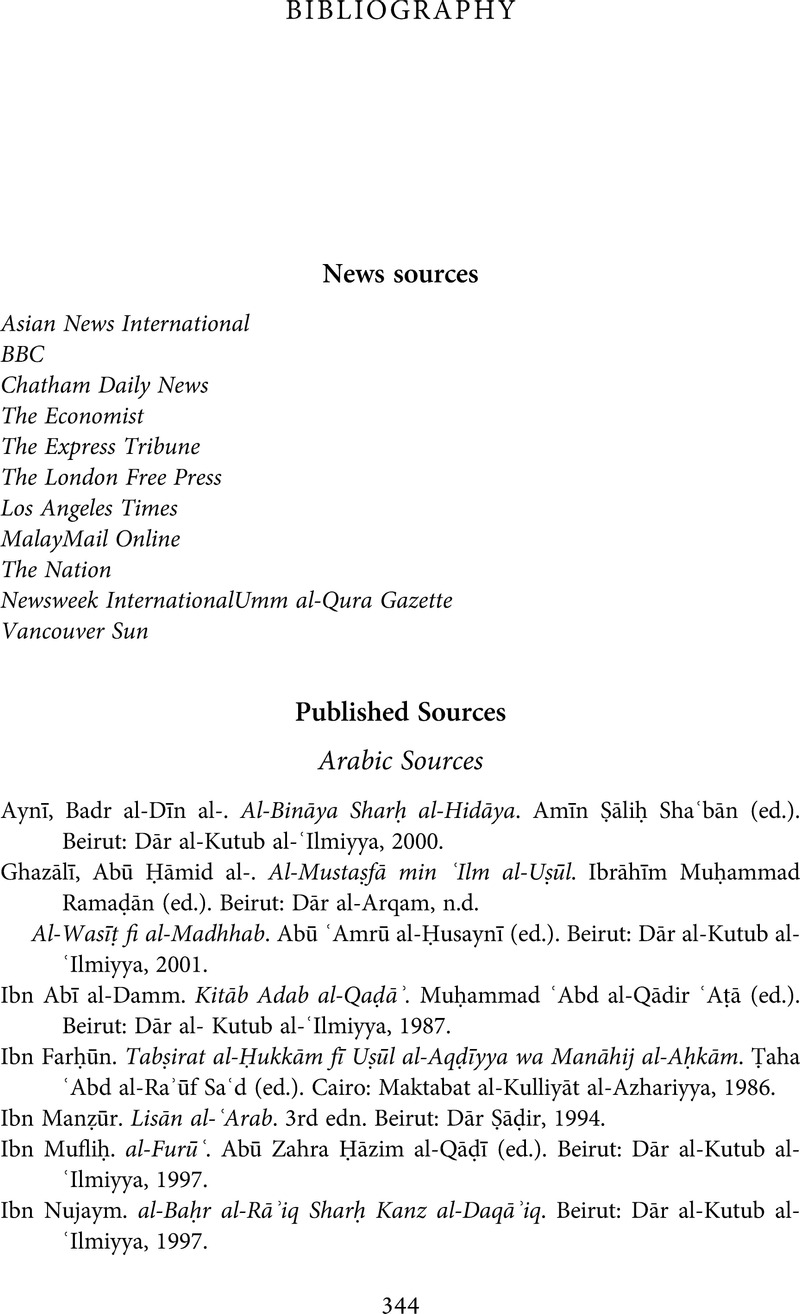Bibliography
Published online by Cambridge University Press: 23 July 2021
Summary

- Type
- Chapter
- Information
- Jurisdictional ExceptionalismsIslamic Law, International Law and Parental Child Abduction, pp. 344 - 366Publisher: Cambridge University PressPrint publication year: 2021

